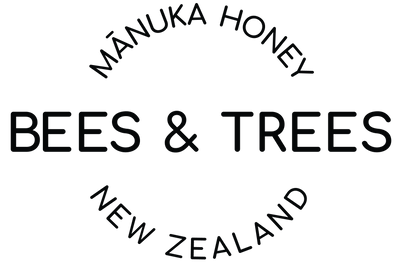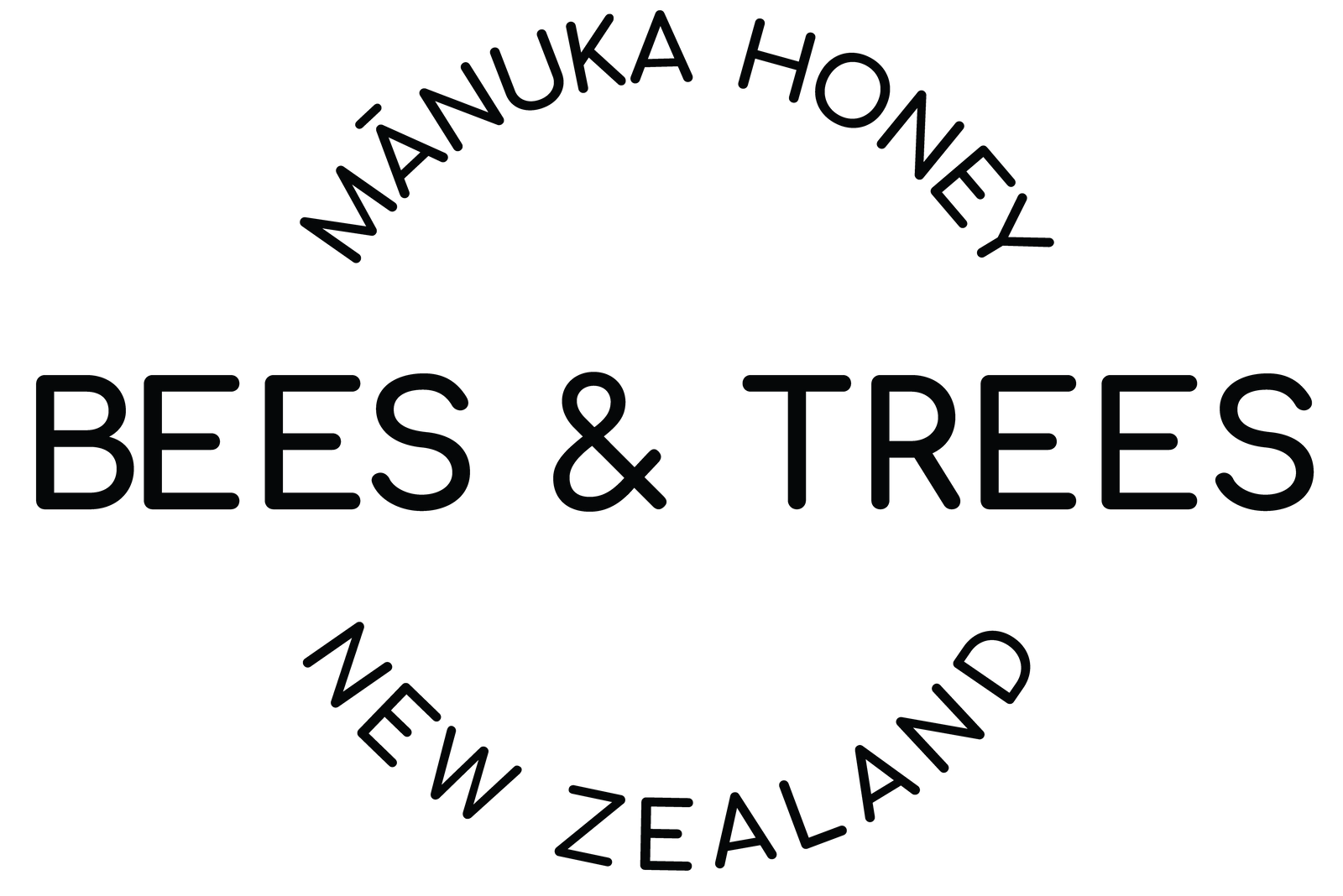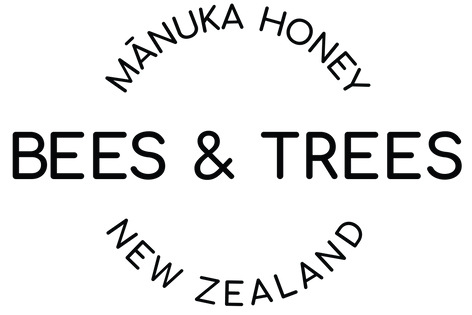Manuka honey isn't just any honey—it's a unique variety of honey that is produced when bees forage the flowers of native Manuka trees in New Zealand. This honey is renowned for its potent health benefits and unique properties.
Let’s look into the factors that make Manuka honey valuable and explore some key facts and figures about this remarkable honey.
Why Is Manuka Honey So Expensive?

To understand why Manuka honey is so expensive, we need to consider what it takes to produce it, the health benefits associated with it, and the global demand for it.
High costs of production
A number of factors make producing Manuka honey a costly affair.
Beekeeping for many hobbyists is mostly a labor of love, with a bit of honey being a sweet return for their efforts. Passion for bee health is common for commercial beekeepers, but operating costs can be daunting. Specialized equipment, access to ample land areas for apiaries, operating costs for maintaining hive equipment, bee nutrition, and varroa mite control all add up quickly. Additionally, hives often require supplementary feeding during winter when natural food sources are scarce.
Manuka honey producers in New Zealand face all of these challenges, coupled with a single crop that flowers for 4-6 weeks each year and is subject to variability in the flowering of the Manuka trees and reliant upon good weather. These challenges result in mixed results year to year and create risk for beekeeping operations.
Legal requirements further increase costs. Beekeepers must comply with stringent regulations to manage hives and equipment, aiming to reduce the spread of diseases like American Foul Brood (AFB). Under the Biosecurity Act 1993, all beekeepers, their hives, and apiary sites must be registered. They also pay levies to the Ministry for Primary Industries (MPI) for government surveillance and regulatory programs. Manuka honey undergoes extensive testing to verify its properties and allow it to carry a “Mono-floral Manuka” designation.
For beekeepers without land, contractual agreements with landowners are necessary. These agreements often involve a royalty or percentage of hive income, a fixed rental fee, or both. These costs typically range from 10% to 30% of honey income and can increase over time or with longer contracts, adding to the financial burden. Additionally, helicopters are frequently used to place hives in the remote wilderness areas where the Manuka is found, which adds substantial costs to the harvesting operation.
Once the Manuka honey has been harvested, it takes around 12-24 months after harvest for the honey to mature and be ready for sale. During this period, it must be stored under specialized conditions to preserve its quality and maximize its MGO content. This natural aging process adds storage costs as well as ties up working capital in honey inventory.
Supply & Demand
The economic principles of supply and demand play a significant role in Manuka honey’s high price tag.
1.Increasing demand
The global Manuka honey market has experienced significant growth due to rising demand, driven by increased consumer awareness of its health benefits. Research has also played a crucial role in this surge, with numerous studies exploring Manuka honey's powerful properties.
As of 2024, PubMed lists over 600 published papers on various aspects of Manuka honey, including its efficacy in:
Global sales of Manuka honey in 2023 were approximately $780M and are forecast to grow at a compounded growth rate of 6.1% through 2034. Growing market demand is being fueled by growing consumer awareness of the many health benefits of Manuka honey. Currently, North America is the largest market, with 2023 sales of $312M, followed by Europe, with $234M, and the Asia Pacific region, with $179M in annual sales.
Across these regions, Manuka honey is primarily being bought and consumed directly by consumers either out of the jar or combined in a favorite drink or recipe. Additionally, Manuka honey is being sold as an ingredient in more and more products from various industries, including:
- Food and beverages: Manuka honey is used to enhance premium products like specialty teas from Nikstea, and gourmet chocolates from Honest Chocolat with its distinctive flavor.
- Pharmaceuticals: Manuka honey is used in medical-grade wound dressings and ointments for its effective antibacterial and healing properties.
- Cosmetics: Brands like Honeyskin incorporate Manuka honey into facial creams, masks, and cleansers to leverage its anti-inflammatory and moisturizing effects.
- Health Supplements: Manuka honey is also featured in dietary supplements and wellness shots, capitalizing on its immune-boosting and antimicrobial benefits.
2.Limited supply
Despite the growing demand, the supply of Manuka honey remains limited. Manuka trees, native to New Zealand, grow throughout New Zealand, but the dense patches needed for producing pure Manuka honey are only found in specific regions. The highest quality honey comes from the "Golden Triangle," spanning the top of the North Island to the West Coast and East Cape.
The production of Manuka honey is seasonal, which further limits supply. The Manuka flowering season lasts just 4 to 6 weeks, typically between September and March. In regions like Taranaki, where our Bees & Trees Manuka honey is harvested, we experience blooms in late December or early January.
This brief window results in highly variable yields, averaging around 23 kg per hive per season and ranging from 15 to 50+ kg. Adverse weather during this period can also significantly reduce yields.
This limited supply, together with ever-growing global demand, results in the high price of Manuka honey on the global market.
Unique Properties & Benefits
We've established that producing Manuka honey is an expensive endeavor. But what makes consumers willing to pay such a high price? The answer lies in the honey's unique properties and impressive health benefits.
One of the defining characteristics of Manuka honey is its high content of methylglyoxal (MGO), a compound that correlates with the honey’s powerful antibacterial properties. MGO is a naturally occurring compound that is created through the conversion of dihydroxyacetone (DHA) as the bees make the honey.
The discovery of this unique attribute can be traced back to Dr. Peter Molan at Waikato University in New Zealand. Dr. Molan was studying the antibacterial properties of various honeys when he identified a distinct, more potent, and stable component in Manuka honey, which he named "non-peroxide activity" (NPA). This stability contrasts with the peroxide activity found in other honeys, which is easily destroyed by dilution, exposure to heat, and sunlight.
Manuka honey's unique composition lends itself to a wide range of health benefits, including:
1. Antimicrobial properties: Manuka honey’s high MGO content gives it robust antibacterial and antimicrobial properties.Manuka honey can alter bacterial morphology, affecting cell growth and size through septal ring alteration. It also stimulates macrophages to release mediators necessary for tissue healing and reducing microbial infections. Manuka’s high MGO content is crucial for its antibacterial activity, alongside other components like hydrogen peroxide, acidic pH levels, hyper-osmolality, and bee defensin-1.
These antibacterial properties make Manuka honey effective in alleviating skin, respiratory, and digestive infections, among others.
2. Anti-inflammatory effects: Manuka honey’s high phenolic content, including compounds like quercetin and kaempferol, provides strong anti-inflammatory benefits.
These phenolic compounds have been shown to reduce inflammatory mediators such as TNF-α and IL-6, helping to modulate inflammation. This makes Manuka honey a valuable natural supplement for managing conditions like arthritis and inflammatory bowel disease.
These unique properties and health benefits make Manuka honey a valuable natural health supplement, supporting its high demand and premium price.
Conclusion

Manuka honey remains a valuable investment for consumers seeking natural wellness products. The rigorous production and certification efforts ensure its superior quality, justifying its premium price and solidifying its status as a valuable addition to any health regimen.
At Bees & Trees, we are dedicated to delivering premium Manuka honey. Each batch is sustainably harvested from remote, pristine regions in New Zealand, and independently tested to ensure high MGO content and potent health benefits. Explore our certified Manuka honey and begin enjoying health benefits today.





